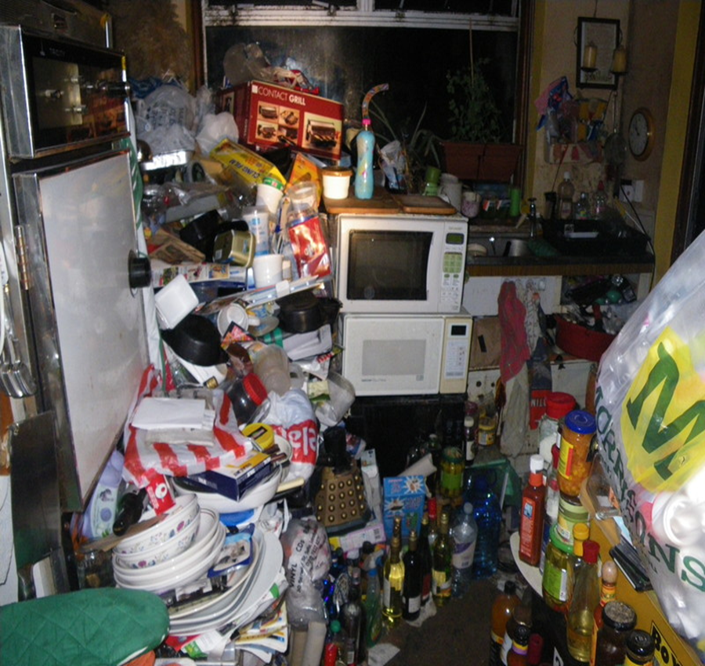|
This newsletter is for everyone working with children and adults in Waltham Forest.
Please share with your colleagues and encourage them to sign up to get it regularly
Data has shown that vulnerable residents such as the elderly or disabled, who are unable to escape easily, are at greater risk of death or injury from accidental house fires.
If you are working with a resident who you think might be vulnerable to fire hazards or burning or scalding themselves, help them to stay safe by encouraging them to take the following precautions:
- If they use electric blankets - make sure they are using them correctly and they are checked regularly
- Ensure that hot water bottles are of good quality and do not show signs of wear
- Kettles should not be overfilled as boiling water could spill and scald
- As a safety precaution, they should use coiled kettle flexes or a cordless kettles which are either spout-filling or jug shaped
- Tea and coffee making facilities should not be too far from the living area so hot liquids don't have to be carried far

Encourage residents who smoke to: smoke outside where possible; use proper ash trays; never smoke in bed; never leave lit cigarettes unattended; use e-cigarettes where possible.
Encouraging residents using candles to: use LED flameless candles where possible; place candles, tea lights and incense burners in heat-resistant holders; place candles on flat, stable and heat-resistant surfaces away from clutter; never leave candles unattended.
Encouraging residents to cook safely by: keeping cooking area clear; routinely cleaning oven, hob and extractor; avoiding portable cooking appliances.
Encouraging safe use of electricals and heating by: not placing items on top or close to heaters, lamps or other electrical equipment; switching off electrical items overnight; looking for overloaded sockets; using correct chargers for lithium ion batteries, such as those on e-scooters.
Identify the presence of flammables by: encouraging individuals to recycle newspapers; keeping an eye out for cylinders, which are highly flammable.
Help residents to consider an escape plan by: planning the best escape route in advance; encouraging them to never store or stack items on planned escape routes; ensuring enough space around doors to open and close them properly; always keeping door and window keys easily accessible.
|
London Fire Brigade developed the Home Fire Safety Checker to support individuals or professionals working with vulnerable individuals to carry out a thorough check to assess homes and to deliver tailored advice to bolster fire safety.
If you are concerned that a resident is at increased risk of fire due to hoarding or self-neglect, you can book a free home fire safety visit from the London Fire Brigade by ringing 0800 028 4428 or visiting webpage below.
 Hoarding can be defined as persistent difficulty discarding or parting with possessions, regardless of their actual value, which results in living spaces becoming so cluttered that using rooms as intended is impossible
The effects of hoarding can cause significant distress or impairment in an individual’s ability to function, and impact nutrition, hygiene, infestations, mental health, and lead to social isolation.
In May 2013, compulsive hoarding was recognised as an independent psychological problem and a diagnosable mental health disorder. In 2018, the World Health Organisation classified hoarding disorder as a mental illness.
Hoarding impacts the wellbeing of vulnerable residents but also significantly increases the risk of fire to the person's home.
What is the scale of the issue?
- In the last 10 years in London, there have been 835 fires in homes of people who save excessively, resulting in 209 injuries and 32 deaths.
- Hoarding affects two to five per cent of the population, but only five per cent of individuals with issues around hoarding come to the attention of statutory agencies.
Clutter Image Ratings
These are Clutter Image Ratings that have been done from a previous study which are widely used across the world. This shows the severity of the problem in many homes across the UK. Two-and-a-half to six per cent of the UK are affected by this disorder.
Hoarding greatly increases the risks of fire for the following reasons:
- Hoarding increases likelihood and severity of fire
- Lack of available space (due to hoarding) hinders escape routes for the resident in event of fire
- Lack of available space (due to hoarding) hinders access/egress of firefighters in event of fire
- Increased risk of fire due to hoarding increases risk of fire to neighbouring properties
- Hoarding leads to the burning lasting a longer time
- Hoarding impacts water absorption, leading to greater structural damage
Harry, a 68-year-old white British man, died in a house fire at his home in Walthamstow on 25 January 2021. His death was due to inhalation of smoke and combustion products and burns sustained during an accidental fire, the cause of which was the ignition of a towel which had fallen on a fan heater.
Harry was also impacted by issues linked to self-neglect and the review into his death outlines the events leading to his death and the subsequent actions taken by services to try to support vulnerable residents and minimise fire risks associated with hoarding and self-neglect.
Modern Slavery for Professionals training (with focus on vulnerable adults), delivered by Tim Stubley, Adults Social Care Team Manager and Catherine Marcus, Strategic Partnerships Coordinator, on 29 March from 10 to 11.30am.
Professionals involved in reviews are encouraged to watch SCIE’s Rapid Review training webinar, which:
- Shares the rationale for, and background to, a SAR In Rapid Time.
- Introduces the model and accompanying tools.
- Presents feedback from the first two test SARs In Rapid Time.
- Discusses the types of cases where the need for speed trumps comprehensiveness of analysis.
Over the last year, the Tackling Child Exploitation programme has been developing a set of Practice Principles for responding to Child Exploitation and Extra-Familial Harm. The Practice Principles will be launching towards the end of February, alongside six resources.
The TCE programme is running free, regional, virtual events throughout March (7 to 23) for all professionals to attend. The events will offer an important opportunity to learn about the Practice Principles and the supporting resources, and will explore how the Principles can be most useful to individual roles and multi-agency partnerships. We will also be sharing feedback from children, young people, parents and carers at the events.

This newsletter is brought to you by the Strategic Partnership Boards, which is made up of Waltham Forest Safeguarding Children’s Board, Safeguarding Adults Board, Health & Wellbeing Board and SafetyNet (our Community Safety Partnership).

|